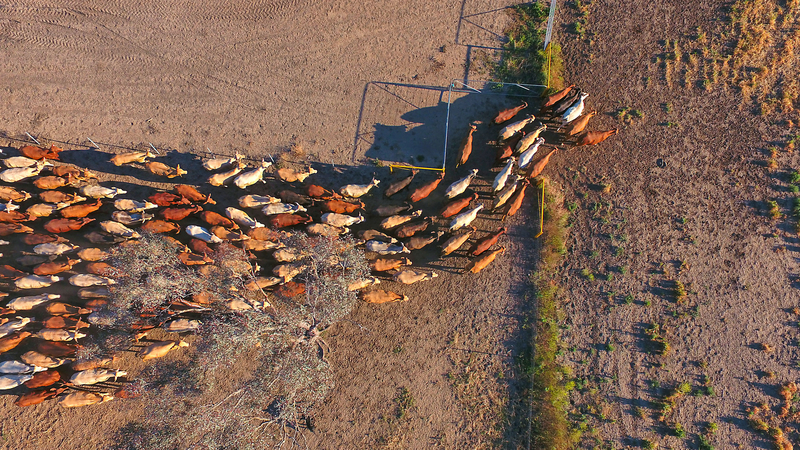An update on PRC investment in Australia
July 31 2020

Investment from the People’s Republic of China (PRC) in Australia continues to be a topic of concern for many Australians. Polling data in 2019 showed that 68 percent of respondents thought that the Australian government is ‘allowing too much investment’ from the PRC.[1] This factsheet provides an update on the current state of play of PRC investment in Australia.
1. Australian Bureau of Statistics (ABS) data shows that in 2019, investment from the PRC accounted for 2.0 percent of the foreign investment stock in Australia, rendering it the ninth largest foreign investor. This compares with:[2]
- US: 25.6 percent
- UK: 17.8 percent
- Belgium: 9.1 percent
- Japan: 6.3 percent
- Hong Kong: 3.7 percent
- Singapore: 2.6 percent
- The Netherlands: 2.3 percent
- Luxembourg: 2.2 percent
2. The Foreign Investment Review Board’s (FIRB) Annual Report 2018-19 shows that ranked by the level of approved investment in 2018-19, the PRC was the fifth largest source of approved foreign investment with $13.1 billion, after:[3]
- US: $58.2 billion
- Canada: $26.0 billion
- Singapore: $16.0 billion
- Japan: $15.1 billion
3. The value of approved investment in 2018-19 from the PRC decreased by 44.7 percent from a year earlier.[4]
- This was driven by a decrease in the number and value of proposed investments, a trend which began in 2015-16.
- In comparison, investment from the US grew by 59.5 percent from 2017-18.
4. A joint report by KPMG and the University of Sydney similarly found that in 2019, PRC direct investment declined 58 percent from 2018 to $3.4 billion – the lowest since 2007. KPMG and the University of Sydney reported that the industry distribution of PRC investment in 2019 was:[5]
- 44 percent in food and agribusiness (up 1699 percent from 2018);
- 43 percent in commercial real estate (down 51 percent);
- Six percent in services (up 1675 percent);
- Six percent in mining (down 55 percent);
- One percent in renewable energy (down 94 percent); and
- Zero percent in energy (gas and oil), infrastructure and healthcare (all down 100 percent).
5. 98 percent of the value of food and agribusiness investment in Australia from the PRC in 2019 was accounted for by the acquisition of Bellamy’s Australia Limited by China Mengniu Dairy Company Limited.[6]
6. This deal was Tasmania’s only source of PRC investment and also made Tasmania the largest recipient of PRC investment among Australian states and territories, receiving 44 percent of total PRC investment in Australia. Tasmania was followed by:[7]
- NSW with 31 percent;
- VIC with 12 percent;
- QLD with six percent;
- WA with six percent; and
- SA with one percent.
7. The Australian Taxation Office (ATO)’s Register of Foreign Ownership of Agricultural Land reports the area of Australian agricultural land with foreign equity shares of 20 to 100 percent.[8]
- According to the Register, the PRC and UK are the largest foreign investors in Australian agricultural land, with both having holdings in 2.4 percent of such land.
- The Outback Beef consortium, which is 67 percent Australian-owned and 33 percent PRC-owned, accounts for 87 percent of this PRC landholding in Australia.[9]
8. A 2018 study by the ABS found that in 2014-15, majority foreign-owned businesses supported 8.7 percent of jobs in Australia. Jobs supported by PRC-owned businesses were concentrated in construction (4000 jobs), mining (3500 jobs) and manufacturing (1500 jobs). This represented 0.9 percent of jobs supported by foreign-owned businesses.[10]
This fact sheet was prepared by Michael Zhou, Project and Research Officer at the Australia-China Relations Institute, University of Technology Sydney.
Sources
[1] Natasha Kassam, Lowy Institute Poll 2019, Lowy Institute for Foreign Affairs, June 2019 <https://poll.lowyinstitute.org/files/lowyinsitutepoll-2019.pdf>.
[2] Australian Bureau of Statistics, ‘5352.0 – international investment position, Australia: supplementary statistics, 2019’, May 7 2020 <https://www.abs.gov.au/AUSSTATS/abs@.nsf/Lookup/5352.0Main+Features12019?OpenDocument>.
[3] Foreign Investment Review Board, Foreign Investment Review Board – Annual Report 2018-19, Australian Government Department of Treasury, May 4 2020 <https://firb.gov.au/index.php/about-firb/publications/2018-19-annual-report>.
[4] Ibid.
[5] Doug Ferguson, Helen Zhi Dent, Sissi Qian, Hans Hendrischke, Wei Li, Demystifying Chinese Investment in Australia – June 2020, KPMG; University of Sydney, June 9 2020 <https://home.kpmg/au/en/home/insights/2020/06/demystifying-chinese-investment-in-australia-june-2020.html>.
[6] Ibid.
[7] Ibid.
[8] Australian Government Australian Taxation Office, Register of Foreign Ownership of Agricultural Land – Report of registrations as at 30 June 2019, June 19 2020 <https://firb.gov.au/about-firb/publications/register-foreign-ownership-agricultural-land-report-registrations-30-june-2>.
[9] James Wagstaff and Kirily Carberry, ‘Who owns Australia’s farms 2019’, The Weekly Times, May 22 2019 <https://www.weeklytimesnow.com.au/agribusiness/agjournal/who-owns-australias-farms-2019/news-story/5dec51bc0b51fe113b48146b60093d61>.
[10] Australian Bureau of Statistics, ‘5494.0 – economic activity of foreign owned businesses in Australia, 2014-15’, August 13 2018 <https://www.abs.gov.au/AUSSTATS/abs@.nsf/Lookup/5494.0Main+Features12014-15?OpenDocument>.

